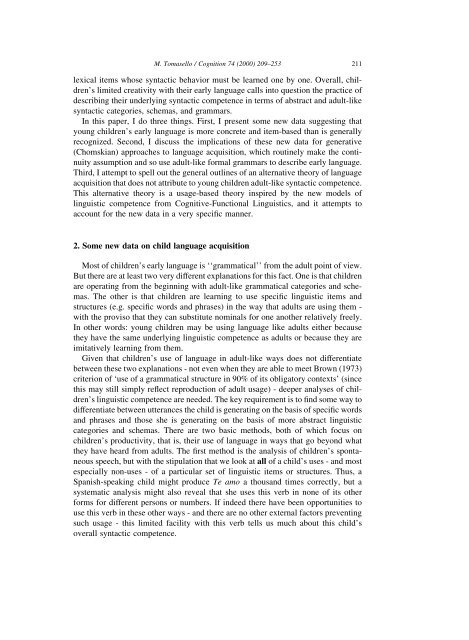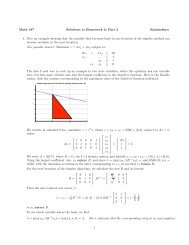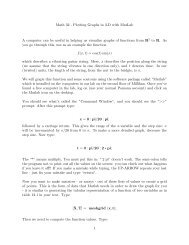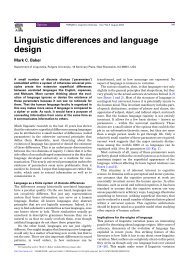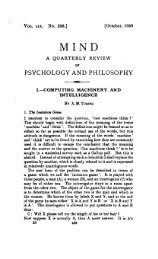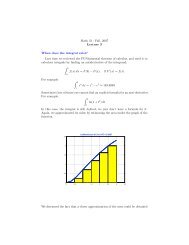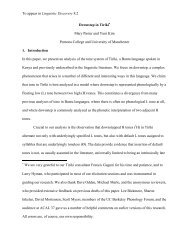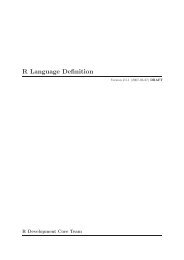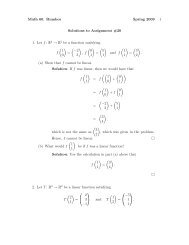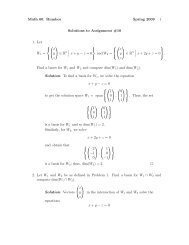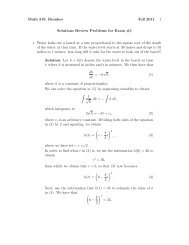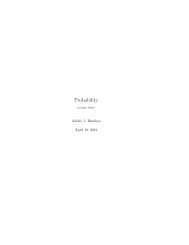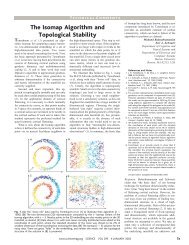Tomasello
Tomasello
Tomasello
You also want an ePaper? Increase the reach of your titles
YUMPU automatically turns print PDFs into web optimized ePapers that Google loves.
M. <strong>Tomasello</strong> / Cognition 74 (2000) 209±253 211lexical items whose syntactic behavior must be learned one by one. Overall, children'slimited creativity with their early language calls into question the practice ofdescribing their underlying syntactic competence in terms of abstract and adult-likesyntactic categories, schemas, and grammars.In this paper, I do three things. First, I present some new data suggesting thatyoung children's early language is more concrete and item-based than is generallyrecognized. Second, I discuss the implications of these new data for generative(Chomskian) approaches to language acquisition, which routinely make the continuityassumption and so use adult-like formal grammars to describe early language.Third, I attempt to spell out the general outlines of an alternative theory of languageacquisition that does not attribute to young children adult-like syntactic competence.This alternative theory is a usage-based theory inspired by the new models oflinguistic competence from Cognitive-Functional Linguistics, and it attempts toaccount for the new data in a very speci®c manner.2. Some new data on child language acquisitionMost of children's early language is ``grammatical'' from the adult point of view.But there are at least two very different explanations for this fact. One is that childrenare operating from the beginning with adult-like grammatical categories and schemas.The other is that children are learning to use speci®c linguistic items andstructures (e.g. speci®c words and phrases) in the way that adults are using them -with the proviso that they can substitute nominals for one another relatively freely.In other words: young children may be using language like adults either becausethey have the same underlying linguistic competence as adults or because they areimitatively learning from them.Given that children's use of language in adult-like ways does not differentiatebetween these two explanations - not even when they are able to meet Brown (1973)criterion of `use of a grammatical structure in 90% of its obligatory contexts' (sincethis may still simply re¯ect reproduction of adult usage) - deeper analyses of children'slinguistic competence are needed. The key requirement is to ®nd some way todifferentiate between utterances the child is generating on the basis of speci®c wordsand phrases and those she is generating on the basis of more abstract linguisticcategories and schemas. There are two basic methods, both of which focus onchildren's productivity, that is, their use of language in ways that go beyond whatthey have heard from adults. The ®rst method is the analysis of children's spontaneousspeech, but with the stipulation that we look at all of a child's uses - and mostespecially non-uses - of a particular set of linguistic items or structures. Thus, aSpanish-speaking child might produce Te amo a thousand times correctly, but asystematic analysis might also reveal that she uses this verb in none of its otherforms for different persons or numbers. If indeed there have been opportunities touse this verb in these other ways - and there are no other external factors preventingsuch usage - this limited facility with this verb tells us much about this child'soverall syntactic competence.


